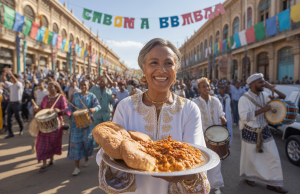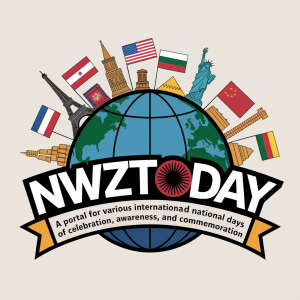Every year on the night of April 30, the skies across parts of Europe come alive with the flicker of bonfires and the echoes of joyous celebrations. This magical evening, known as Walpurgis Night, is steeped in history, folklore, and festive traditions that continue to enchant revelers to this day. But what exactly is Walpurgis Night, and why do people celebrate it with such gusto? Let’s dive into its origins, significance, and the captivating ways it’s observed.
The History of Walpurgis Night
Walpurgis Night, or “Walpurgisnacht” in German, is named after Saint Walpurga, an 8th-century abbess known for her piety and miraculous deeds. She was canonized on May 1, and the eve of her feast day became linked with ancient pagan traditions that celebrated the arrival of spring. The night was believed to be a time when witches gathered in the mountains to perform rituals, and people lit bonfires to ward off evil spirits.
Over time, the Christian and pagan elements intertwined, creating a unique cultural celebration that combines religious homage to Saint Walpurga with the festive spirit of springtime renewal.
Why Is Walpurgis Night Celebrated?
At its core, Walpurgis Night is a celebration of life, light, and the triumph of good over evil. It marks the transition from the dark, cold winter months to the warmer, brighter days of spring. The bonfires symbolize purification and protection, driving away the lingering shadows of winter and any malevolent spirits that might linger.
For many, it’s also a time to honor Saint Walpurga, whose work in spreading Christianity and her reputed miracles made her a revered figure in medieval Europe. The night serves as a reminder of her legacy and the enduring power of faith and community.
How Is Walpurgis Night Observed?
Walpurgis Night traditions vary across countries, but some elements remain universal. Here are a few ways it’s celebrated:
- Bonfires: Communities gather to ignite large bonfires, a practice that dates back to ancient times. These fires are a symbol of protection and a way to welcome spring.
- Costumes and Dancing: In many regions, people dress up as witches or other mythical creatures and dance around the fires, adding a theatrical flair to the night.
- Music and Festivals: Live music, singing, and festive markets are common, creating a lively atmosphere that brings people together.
- Traditional Foods: Special dishes and drinks are prepared, often reflecting local customs and flavors.
Fun Facts About Walpurgis Night
- Walpurgis Night is sometimes referred to as the “Second Halloween” because of its association with witches and spirits.
- In Sweden, it’s known as “Valborg” and is celebrated with choir singing and student festivals.
- The Brocken, a mountain in Germany, is famously associated with Walpurgis Night and is said to be a gathering place for witches.
- In Finland, it coincides with “Vappu,” a major celebration for students and workers.
A Call-to-Action for Readers
Whether you’re fascinated by history, intrigued by folklore, or simply looking for an excuse to celebrate, Walpurgis Night offers something for everyone. This April 30, 2025, why not embrace the spirit of the evening? Host your own bonfire, learn a traditional dance, or explore the rich cultural heritage of this enchanting holiday. Share your experiences and join the global community in keeping this magical tradition alive!









